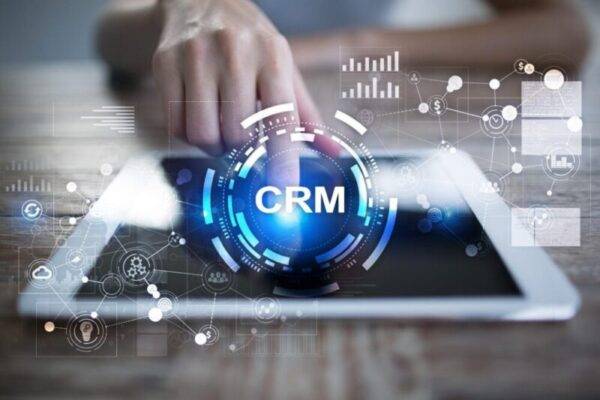Data is the name of the game in the 21st century. Today it is very easy to collect gigabytes of consumer dates. However, quality speaks more than quantity.
Today, the marketing teams gather an abundance of data with a few clicks. But, in this fast-moving data, data changes constantly. So, which data is obsolete, which is important, and which part can have an impact on future strategies, is a core decision.
Therefore, in this data-driven sales market, data enrichment is essential. In this article, I have listed the top 3 reasons for implementing CRM data enrichment. Read thoroughly for smart data management.
So, here you go:
Data Enrichment in CRM
The term “data enrichment” refers to the process of refining and improving raw data. For a sales team, data enrichment combines all forms of data and helps in improving the quality of the customer profile.
Now, data enrichment in CRM refers to adding the missing data to your CRM records. This can be done by integrating data enrichment tools in CRM. For instance, signal, technographic, or firmographic data.
With continuous CRM data enrichment, firms can automatically update all relevant information into their accounts. Whenever information is changed by any of the accounts, it is directly added into the system without any manual effort.
This ability to stay up-to-date regarding customer information helps in customer interaction. Furthermore, it helps in extracting key points for communication and enhances the overall leads.
Now, before jumping towards the reasons to implement CRM data enrichment, let us learn about the three key steps of a data enrichment process. Here they are:
- A data enrichment tool extracts real-time data from multiple online resources and works as a reservoir for the firm.
- Firms integrate a sales intelligent tool into their CRM with an app. An app like Zapier is helpful.
- Tools now start adding the missing information into the CRM. Consequently, companies get a robust consumer account.
Why CRM Data Enrichment is Helpful?
1. Keep Your Forms Short and Accurate
Online forms are the number 1 way to collect new leads; marketers use newsletter subscriptions, online registration, and email discounts, etc. to obtain consumer information so these customers can be nurtured and converted.
However, marketers often lose leads due to lengthy online forms. Do you know why consumers often leave when they see a long list of questions? Because they have zero motivation in spending 5 minutes of their lives answering your questions.
People prefer to leave the site rather than make their purchase if the form is lengthy and asks for detailed information. Time has changed and today consumers want services quickly, no one has the time to fill a lengthy form. Therefore, create a short and time-saving sales cycle.
If you have a data enrichment tool in your CRM, you do not need to ask for every piece of information in your form. With just a few basic questions, you can complete the form. The rest of the information can be automatically filled by the data enrichment tools.
Thus, there is minimum human intervention, so the information is accurate. Besides this, consumers are more likely to fill your form if its short and to-the-point. Real Estate CRM and other marketing tools can benefit from data enrichment techniques.
2. Clean Database and Minimized Storage Cost
This aspect might seem connected to the finance and operations team but the sales and marketing department also play a part in it. For instance, the marketing team might generate thousands of leads every year.
The finance team, on the other hand, raises questions on cleaning up the data because of cost. But, which data is important and which is bogus? How will you know?
Data enrichment tools help marketing teams identify the unnecessary data that is just acquiring space. In this way, you can delete the extra data and the business will have no negative impact on it.
3. Enhanced Consumer Experience and Customization
The core reason for using CRM data enrichment is to enhance the customer experience. Since you get more insights and information without bothering your consumers, you have better chances to draw more effective strategies.
For instance, highly relevant data helps in creating the most effective sales scripts. Similarly, it opens up new opportunities to upsell and cross-sell.
Apart from it, the detailed and accurate information helps in getting the red flags related to consumers. Marketing teams do not want to invest their time and money in irrelevant consumers. Therefore, prospects with a high probability to convert are given more attention.
Furthermore, it helps in immense customization. In this modern era, marketers focus on hyper-targeted segments. Therefore, knowing more about the consumers is essential. If we look a few years back, just knowing the first name of the consumer was enough for personalization.
Today, things are changed, and prospects are targeted through events, interests, relations, etc. All these things require more data than usual. After reading the above points, if you are curious to know which data enrichment tools are the best, let me share some of them:
- Clearbit
- LeadGenius
- Vainu
- Openprise
- Dataanyze
Use CRM Data Enrichment to Achieve Your Marketing Goals
No matter what your role in a company is, you must be dealing with data-driven information for every task. Getting access to data is simple, but ensuring that you have the right quality of data is difficult. Data enrichment tools are the best solution for this.
By successfully implementing data enrichment into your CRM, you can cut down your form details, make the sales cycle short, increase personalization, and enhance the overall customer experience. Make this one-time effort of using these data tools and experience a difference in data management. The quality of data will also have various indirect impacts on the betterment of the company.
Have you ever implemented a data enrichment tool into your CRM? How your experience was and what did you learn from it? Share your views with us!
Also read about: Document Security & Responding to Rising User-based Data Security Risks




